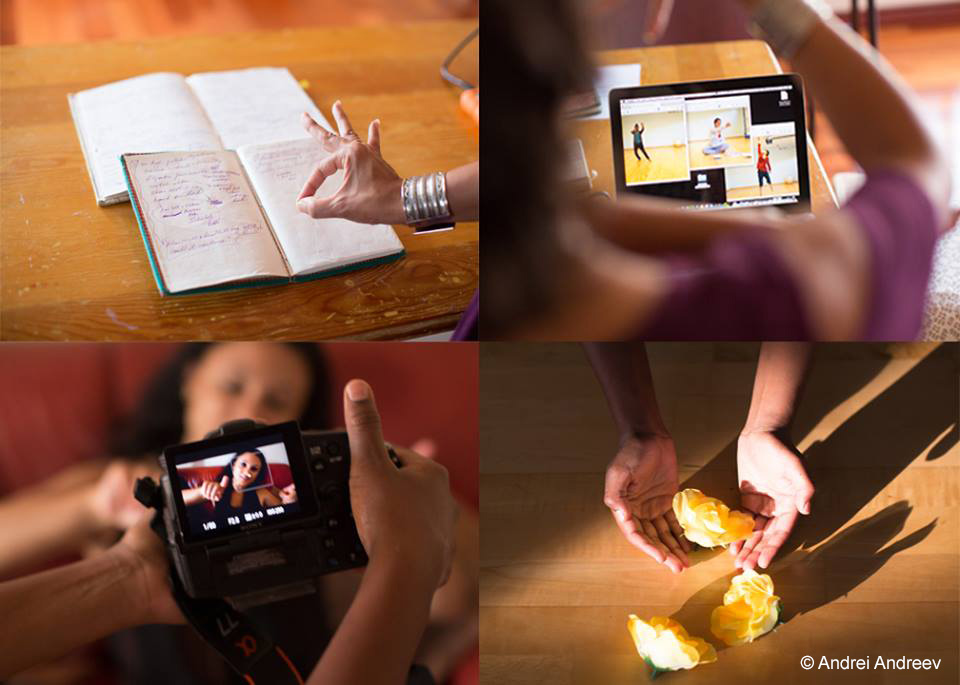The following criteria are central to our definition of the collective: we want our relationship to be horizontal as opposed to the hierarchies found in dance companies or organizations working under one artistic director. In line with our reliance on free and inexpensive internet technologies, we are, as we have pointed out in a previous article (Chatterjee and Lee 2013), (*5) inspired by an open source philosophy that emphasizes “collaboration instead of competition; openness instead of proprietary rights and trade secrets; quality code [or choreography] instead of profitability,” (Berquist 2003: 223).
(*5) inspired by an open source philosophy that emphasizes “collaboration instead of competition; openness instead of proprietary rights and trade secrets; quality code [or choreography] instead of profitability,” (Berquist 2003: 223). (*3) Very importantly, “we define ‘loyalty’ as committing to coalition-building dialogues that embrace productive disagreement and critical feedback” (Chatterjee and Lee 2013: 2).
(*3) Very importantly, “we define ‘loyalty’ as committing to coalition-building dialogues that embrace productive disagreement and critical feedback” (Chatterjee and Lee 2013: 2). (*5)
(*5)
A capacity of sustaining disagreement is, in Ziemer’s discussion, associated with friendship. While some notions of accomplice-ship as delineated by Ziemer do resonate with the Post Natyam Collective, we are not “only” accomplices. Accomplice-ship is, according to Ziemer, characterized by temporality: a short-term relationship targeted toward one specific, subversive project/intervention and lasting through the duration required for completion of this project/intervention. The Post Natyam Collective, however, is not short-term, and its members are also friends. Being part of Post Natyam Collective means having entered into a long term, committed, consensual, intimate, creative, and personal relationship. According to Ziemer, being friends and accomplices (partners-in crime)*10 *(10) is not mutually exclusive (cp. Ziemer 2012: 124–127). (*20)
(*20)
For the Post Natyam Collective multi-vocality is central: finding a consensus is not necessary in the artistic process, but it is required for moving forward organizationally. Our collaboration has continued to change over the past ten years, catalyzed by several structured and intense visioning processes that included reflecting our individual and shared goals and needs, past experiences of challenges and successes, as well as adjusting our collaboration to availabilities and access to funding and infrastructure. There were two distinct turning points: one occurred in 2008/2009, when we moved away from attempting to get together in person to produce a joint artistic product in favor of a long-distance process;*11 *(11) and the second was in 2011, when we moved away from focusing on creating a joint product altogether to engaging in shared artistic process. These shifts are highly intertwined and affected by processes of self-organizing our collective, in which we strive to pool resources and share—as much as possible—the contributions necessary to create an artistic product (cp. Becker 1974) among collective members. For a large part of the process, we even, in some sense, act as each other’s engaged audiences, receiving and commenting on artistic raw materials via the feedback process. Unlike many collaborations, therefore, our process is no longer geared towards a shared goal, a final collaboratively created product; instead it is trying to create artistic support, a shared pool of materials from which we can translate and recycle materials, and an intimate engagement with each other’s artistic explorations, as well as expanding our shared knowledge by engaging with disparate (aesthetic, political, theoretical, etc.) positions and local knowledges contingent on our geographic dispersal (cp. Chatterjee, Ling Lee, Moorty, and Tata 2011). (*8)*12 *(12)
(*8)*12 *(12)
Sandra Chatterjee ( 2015): Rethinking Collective Artistic Production. In: p/art/icipate – Kultur aktiv gestalten # 06 , https://www.p-art-icipate.net/rethinking-collective-artistic-production/



 Artikel drucken
Artikel drucken